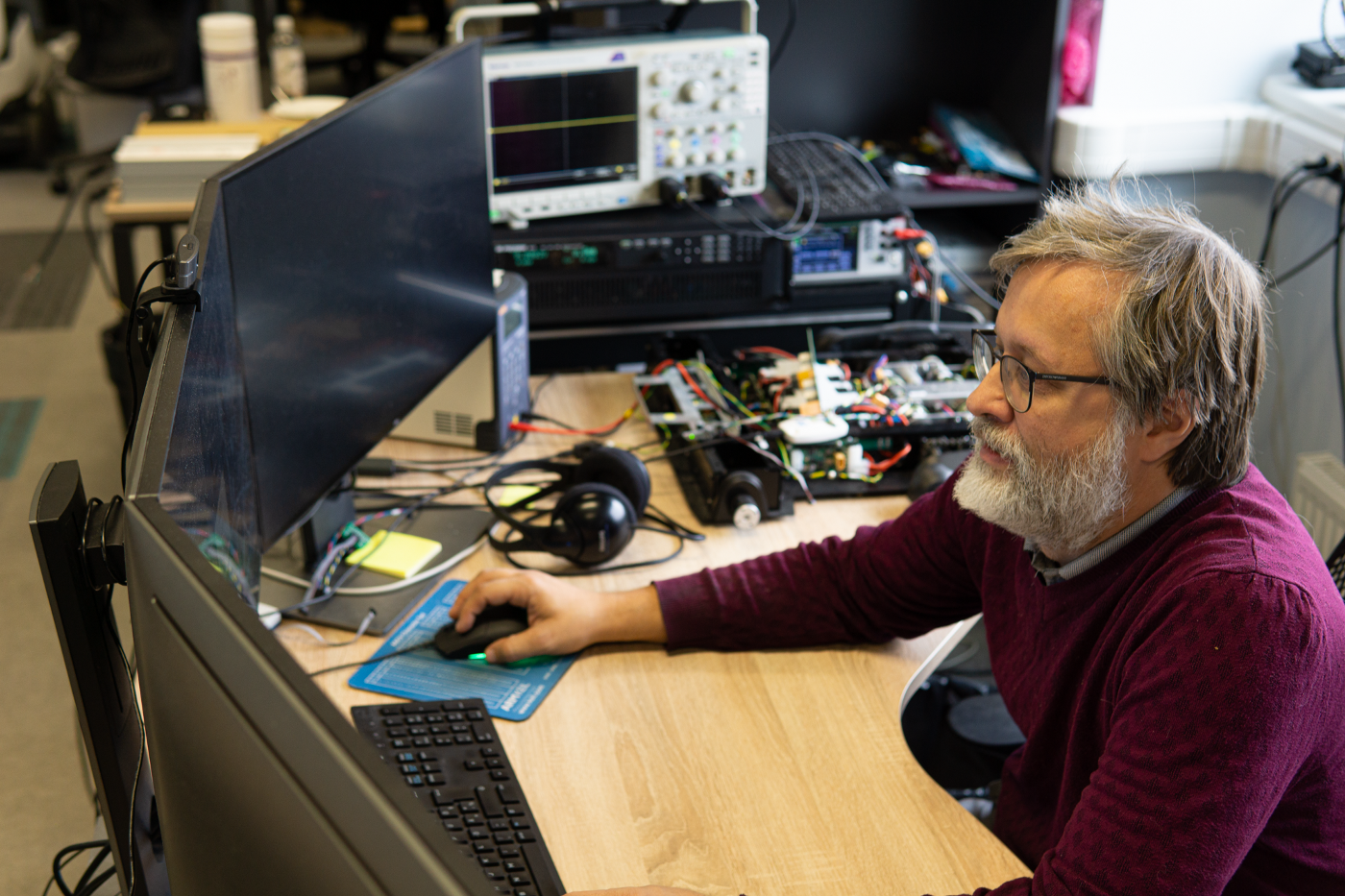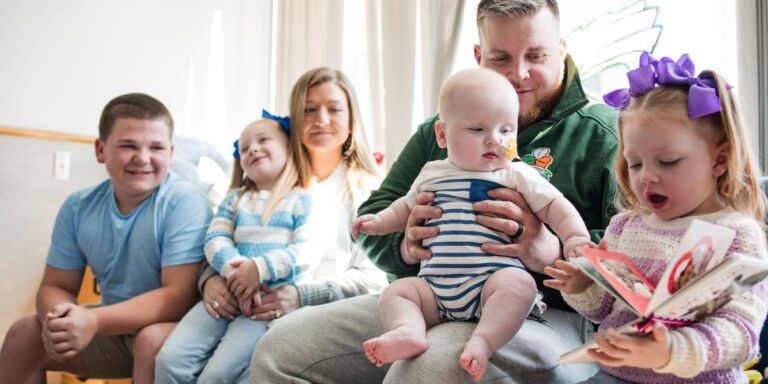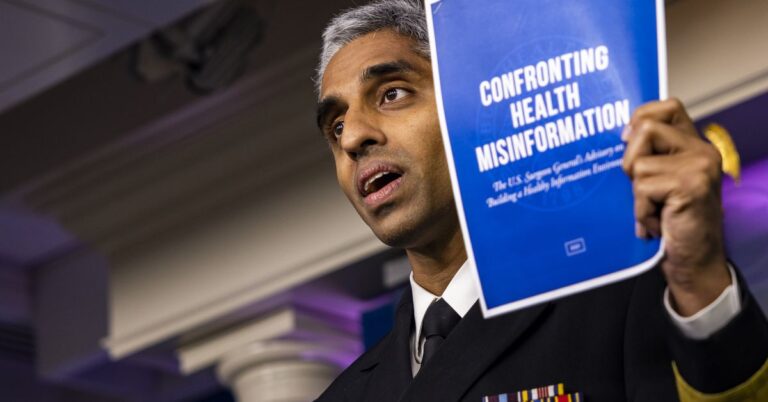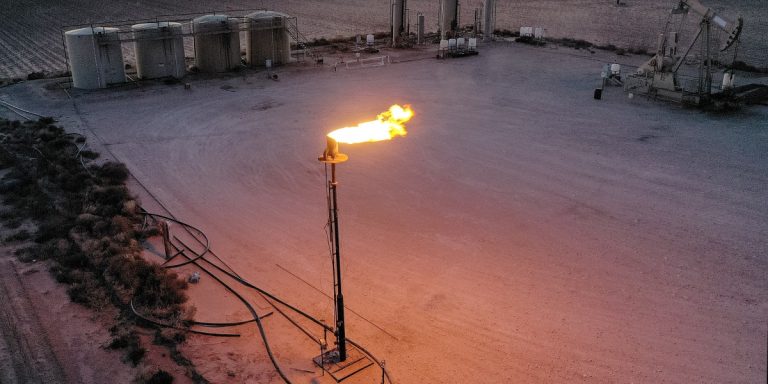
An Interview with Sulo Kallas — Senior Electronics Engineer, Starship Technologies.
At the Starship Head Office in Mustamäe, Tallinn, the world’s leading delivery robot is being developed as a solution for the last mile delivery challenge — a six-wheeled robotic vehicle, resembling a small moonwalker. A specialist, at home in both electronics and software, is invited to join the robotics platform team, which combines these two areas of expertise in one role.
We do not expect a perfect knowledge of several technologies. What is important is that this new team member has an eagerness to learn on their own, and to find a solution for every challenge. Because there are a lot of challenges that need solutions that no one in the world has created before.
What is Starship offering to this new team member? Senior Electronics Engineer Sulo Kallas, who joined Starship in its early years, has the answers.
Why Starship? There is intense competition for employees in the technology sector. How do you attract talent to join you?
We are doing something that was said to be impossible just a few years ago. We are the world’s leading company in robotizing last mile delivery; offering an alternative to traditional services. We are not just one of the leaders, but the leader, no one else has come as far.

We have a clear goal and vision, which our employees understand and feel — our work has an impact and a tangible result. We listen to our people; they have a lot of freedom and there is no chain of command from top to bottom. Everyone can express their opinion and offer their solution.
What has kept you motivated the most in this job and what part of your job do you enjoy the most?
I like that decisions in Starship are reasonable. It would be difficult for me to work in an organization where management does things that are not rational. We have a common goal: to solve the challenges presented by last mile delivery services and to reach every corner of the world with our robots. The whole team is working for that.
The company’s founder, Ahti Heinla, is an engineer and is still creating software himself as well. He is a very talented and creative software engineer with extensive programming experience. Ahti has managed to keep the company focused on what matters the most — the development of the product and service.
I also like that everyone has the opportunity to influence the development of the company. The people I am in touch with on a daily basis are really nice. There are some of the brightest brains working here, you could even say that every second person here is kind of a genius. And, of course, I care about what we want to achieve.
What is your team at Starship doing and what have the most interesting challenges been for you so far?
I work in a platform team, which connects two areas. On one side, mechanical engineers deal with the mechanical part and, on the other, software engineers write artificial intelligence, navigation, machine vision, and other programs. We deal with electronics, hardware, and software.
We don’t write the artificial intelligence code that makes a robot do something. Rather, we offer a technological platform for it. We design the electronic modules ourselves and do not use standard electronics solutions.
There is, no doubt, a significant amount of programming involved with electronic modules. Our platform team is working to secure a working operation system, we develop drivers and create other necessary support for the software that controls the robot, so that it can connect to the physical components and sensors. We do quite deep level embedded development and non-embedded development as well.
Does this mean that you often have to grasp a soldering iron?
Indeed, a soldering iron is a common tool, but we do not solder the new models ourselves. Even the first prototype we order from the factory, electronics are no longer “homemade” these days. But when the prototype comes, it’s rarely working flawlessly right from the start. At the beginning, we make quite a lot of additions and corrections, and the soldering iron is definitely needed.
Some of us are proficient in both hardware and software. For example, some writers of driver software need to know a lot more about hardware than ordinary programmers. Conventional software developers are usually unfamiliar with the hardware. In general, our team is working in the area where software and hardware come together.
Who are you looking to add to your team and what should they know?
We are not looking for a specific person with specific skills, but we are looking for a talented engineer, who is interested in operating in the melded area of hardware and software. If they are strong in electronics, we are interested in them. If they are strong in software, we are interested in them too. If they can do both, even better.
Inevitably, we deal with completely new things on a daily basis, and we do not have suitable ready-made solutions at hand. So, we are creating new solutions that never existed in this form before. This requires people who do not do simply what they are told to do. We need creative specialists who understand what the need is, and can work out a solution that meets that need. Sometimes you need a solution with simple electronics and complex software, and sometimes it is the other way around.
We are looking for an open-minded person who always finds a suitable approach. We are essentially looking for open-minded engineer. A person who sees finding a solution to a problem as a challenge, instead of seeing problems as obstacles. In fact, we have a variety of problems that need good solutions. To give some examples, this new team member might be a programmer with network experience, or an electronics engineer, who can solder analog electronics.
How does the new employee improve themselves and learn new skills?
Only a person who can learn by themselves, can be successful in this field, although there are training opportunities as well. In our company, training does not mean something classical, like participating in various courses. Skills are also developed through mentoring. We have a mentoring program every year. We educate newcomers, and employees can choose their mentors themselves.
What personality traits should the person joining your team have and what should they be prepared for?
In theory, this is possible, but there is no one person in the platform team today who can do their job completely alone, because we face really difficult challenges. You must always communicate with others. We need to make sure that the needs of the platform users are met.
You have to communicate with programmers and mechanic engineers. A good example is locks for robots. In locks for robots, electronics and software are needed to understand whether the door locking mechanism is closed, open or jammed.
So far, Starship robots have delivered more than 2 million deliveries. There have been failures during that time, and we need to investigate and resolve them in our interactions with other teams; including, to a large extent, the maintenance team. As we offer a last mile delivery service, we have to make a robot that is durable enough for daily use and easy to maintain. We are looking for a person who is a communicative and independent thinker, and able to find great solutions.
What have been the most complex solutions your team has come up with?
A major task was to transfer the connection plate that connects the cameras to the computers, onto the modern PCI Express. This was the largest single project we have ever had. It is a PCI Express expansion card that allows you to connect more than ten cameras and other high-speed devices to a computer in the robot and make them available to the operating system and application software. However, I cannot publish the very detailed details of all this.
Cameras, radars, motor controllers — the electronics of all these components are made by us, and these tasks have also been quite complex. To be more specific, we created the card on the basis of FPGA. The PCI Express FPGA card helps move data between sensors, cameras, and the on-board computer, especially fast.
What do team members do in their free time, are their hobbies from a different field?
The platform team tends to be interested in similar topics at home as well. These are all people with an engineering passion of sorts, who do more or less the same things in their spare time, like some cool electronics, mechanics or computer hobbies.
But that’s how it is in this area. If you want to combine your hobby and work, this is the best place to be.






